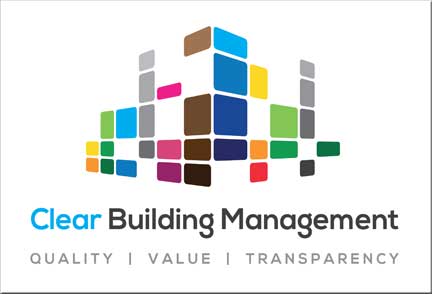UPDATE 2 July 2021: Bill is now £18 million
Removal of Grenfell style cladding costs sky rocket up to £17.8 million
COSTS to replace Grenfell-style cladding and installation of further safety measures at a former office block turned flats has spiked to £17.8 million. The bill to remove the dangerous aluminium composite material cladding as well as adding additional safety measures at Nova House, which compromises 68 flats in Buckingham Gardens, will cost substantially more than the initial £4 million estimation made in October 2017.
Slough council may take over Nova House from ground speculator Robert Steinhouse, but it is an open question whether it will pay to remove the Grenfell cladding.
Communities Secretary Sajid Javid optimistically believed that freehold owners would pay up – in law, the building and land is their’s – but that was never very likely.
In leasehold, leaseholders do all the paying; freeholders make all the decisions – even though their nominal ownership can amount to as little as three per cent of the collective value of the leases.
Last Thursday The Guardian reported the Nova House issue, where the freeholder has been Robert Steinhouse through his vehicle Ground Rent Estates 5 Limited.
He is reportedly the director of 91 companies.
Taxpayers face £4m bill as landlord refuses to make tower block safe
Slough council poised to take over freehold of property and pay for safety work as current owner refuses to foot bill A landlord who is refusing to pay an estimated £4m bill to make safe a block of flats built with Grenfell-style cladding is likely to be bailed out by the taxpayer.
LKP wrote to Slough Council about this site as long ago as October last year when Martin Boyd of LKP wrote to Sloughs Chief Executive on 26th of October:
“We understand that Slough Council has purchased the freehold for the block known as Nova Tower which had been owned by a private landlord.
“Can we urgently ask you to advise the APPG on Leasehold and Commonhold Reform with an update on the current position and the authority’s proposals for addressing the cladding problems at Nova Tower.
“We are particularly interested to understand the authorities proposals for passing on both short and long term costs to the leaseholders as well as any dates by which the cladding will be rectified.”
Despite an assurance from the Chief Execs PA on 6th November advising that official would revert to LKP and the APPG we have not heard anything back on over 2 months.
The Guardian quotes Mohammed Nazir, Slough cabinet member for corporate finance and housing:
“We simply do not believe the current freeholder has the capacity to do the work that is needed to safeguard the safety of residents.
“We will not put a price on our residents’ lives and their safety remains our priority.”
The Guardian claims that the building is likely to be handed over for a nominal price.
But if Slough pays for fire marshals and to remove the Grenfell at the 68-flat site – which LKP believes is highly unlikely – it will mean cuts to other spending, officials made clear. Its budget has already been cut by £19m over the past three years.
How can Slough council assume financial costs for Nova House on behalf of private leaseholders to the detriment of those without housing of any sort, for whom it does have legal liability?
The Guardian quotes Nigel Glen, the CEO of the Association of Residential Managing Agents (ARMA), saying:
“The government has suggested that landlords should pay for the works but there is no suggestion that anyone has acted inappropriately or cut corners, rather that building control approved and signed off the various types of cladding at the time and have only now tested those very systems and found them unsuitable.”
In fact, The Times has run a front page report on the huge bills run up by freeholders for fire marshals owing to Grenfell cladding.
Freeholders have legal liability to ensure these buildings are safe, and as they are confident leaseholders will pick up the bill, there is no incentive to control costs.
The Guardian says Robert Steinhouse’s company, Ground Rent Estates 5 Ltd, estimates the cost of re-cladding at £1m, with a further £500,000 for fixing sub-standard fire compartmentalisation inside the building which means that fire would spread faster than it should.
Sources at the council suggested the total could be as high as £4m.
Ground Rent Estates has made an insurance claim on behalf of the leaseholders to cover the cost but said in a statement that if that fails “[leaseholders] will be liable for the costs”.






 Telegraph reports rip-off leasehold sales packs
Telegraph reports rip-off leasehold sales packs





















“There might, just conceivably, be a silver lining to the fire trap cladding debacle?
We know long leasehold is like a legal scam. Deliberately designed so. The problem with knowing this and saying it is that nobody listens to such simple slogans.
The cladding scandal exposes the stark reality of long leasehold in simple terms easy even for the media to see: its whole purpose is to pass on all costs to leaseholders while leaving freeholders with a cost-free, reliable and profitable investment. With the added bonus of being called landlords with all that English law bestows on this term.
Even if Sajid Javid and others do not yet know it, freeholders are not the ordinary kind of landlord and have no liability for any cost (subject to keeping within the one-sided lease and reasonableness). Governments made this so.
Maybe now they will know and see what they created.
It is ironic that freeholders can devise fees for consents on almost any action taken by a home-owner, from changing carpets, fitting a shower, or just repainting the front door, all on the claim that the ‘landlord’ needs to protect their building/investment.
Yet seemingly while focusing on shower cubicles and carpets inside the demised lease, ‘landlords’ of long leasehold can turn the whole building into a fire trap, or fail to maintain the integrity of compartmentation, or run unprotected gas pipes up the single escape stairwell etc, or introduce pretty much any other hazard to health and welfare and significantly devalue leases thereby, and do all this entirely unfettered of the views/wishes of the actual home owners who must pay for it all, because that is how long leasehold is designed to work in England and Wales.
The added horrific twist, as often pointed out by LKP, is that unlike a real landlord a freeholder has a minimal financial stake in the building while gaining all this unfettered power.
I never trust any theological graphs of relativity or so-called ‘No Act World’ second guessing of market values, as these all seem designed to maximise profit for the investor, but all the graphs support the principle that the cost of the freehold for much of the term of long leases can be far less than the cost of even one long lease thereon.
Developers profit handsomely from selling leaseholds (at no discernible or proven discount) and all that follows for freeholders is sheer profit without liability. If the freehold is sold on the stake can still be 1% to 5% of the full market value.
What does the freeholder get for investing less than the value of one lease? A ‘reversionary’ interest in the premises.
Interesting how this interest works. Case law shows that a freeholder at any stage during the term of the leases can claim a landlord’s ‘human right’ to add more units on the top of the premises, and thus sell more leases. Literally over the heads of the existing occupiers or an existing RTM company’s objections.
Think about this. While not actually PAYING anything for the premises itself, a freeholder apparently OWNS it now, not in the future, and has the right to change it without needing consent of leaseholders within it?
Governments created this state of affairs. This is why I say they are collective eejits. Passing laws that damage real lives while expending their energy on party politics.
Seems to me that much of the law and regulations applied in the UK are undermined by the legislators themselves. If they meant thigns as they are then they are cads and bounders. Otherwise it is the result of something government seems expert at: passing laws of unintended consequences.
As a mere layman I’m not sure I trust that anyone really understands a ‘reversionary’ interest versus a here and now interest, or why the first should be treated the same as the second to allow unfettered behaviour by freeholders, but it seems to be so given what courts allow freeholders to do.
Long Leasehold must be abolished. Like slavery in its time it has got away with far too much cynical exploitation of ordinary people for far too long.
The cladding debacle should be the final nail in leasehold’s coffin, along with reform of residential building standards and liabilities.”
According to minutes of a council cabinet meeting held in June 2014, it seems there were 12 leaseholders in Grenfell. The rest were tenancies.
The works minuted – which includes thermal cladding to the building – were classed as improvements and not recharged to the 12 leaseholders. Thankfully I can’t find evidence that any leaseholders actually died, but of course all were made homeless.
It is interesting to me that thermal cladding to the building was classed as an improvement and not recharged under the leases.
Grenfell contained only a small number of leaseholders of course. However, this fact might or might not assist private block leaseholders with similar cladding if it was added and later found wanting?
I’m forwarding a copy of the said minutes to LKP.
Quoting from above report “Last Thursday The Guardian reported the Nova House issue, where the freeholder has been Robert Steinhouse through his vehicle Ground Rent Estates 5 Limited.”
When you look at the records at Companies House, , Ground Rent Estates 5 Ltd seems to have been declared a dormant company for a number of years.
How can GRE5L own the freehold of Nova house and not declare the ground rent income in its accounts.?